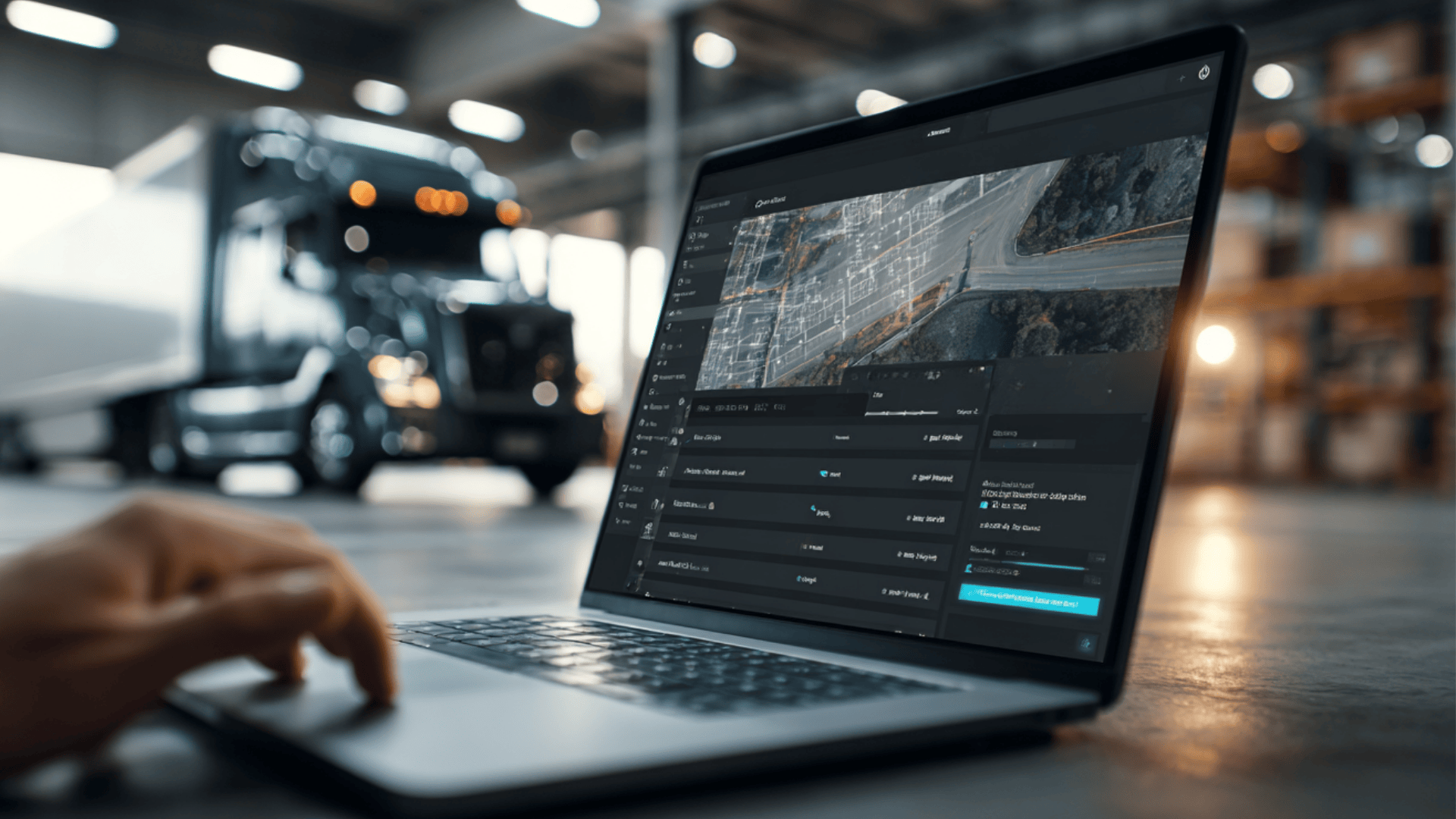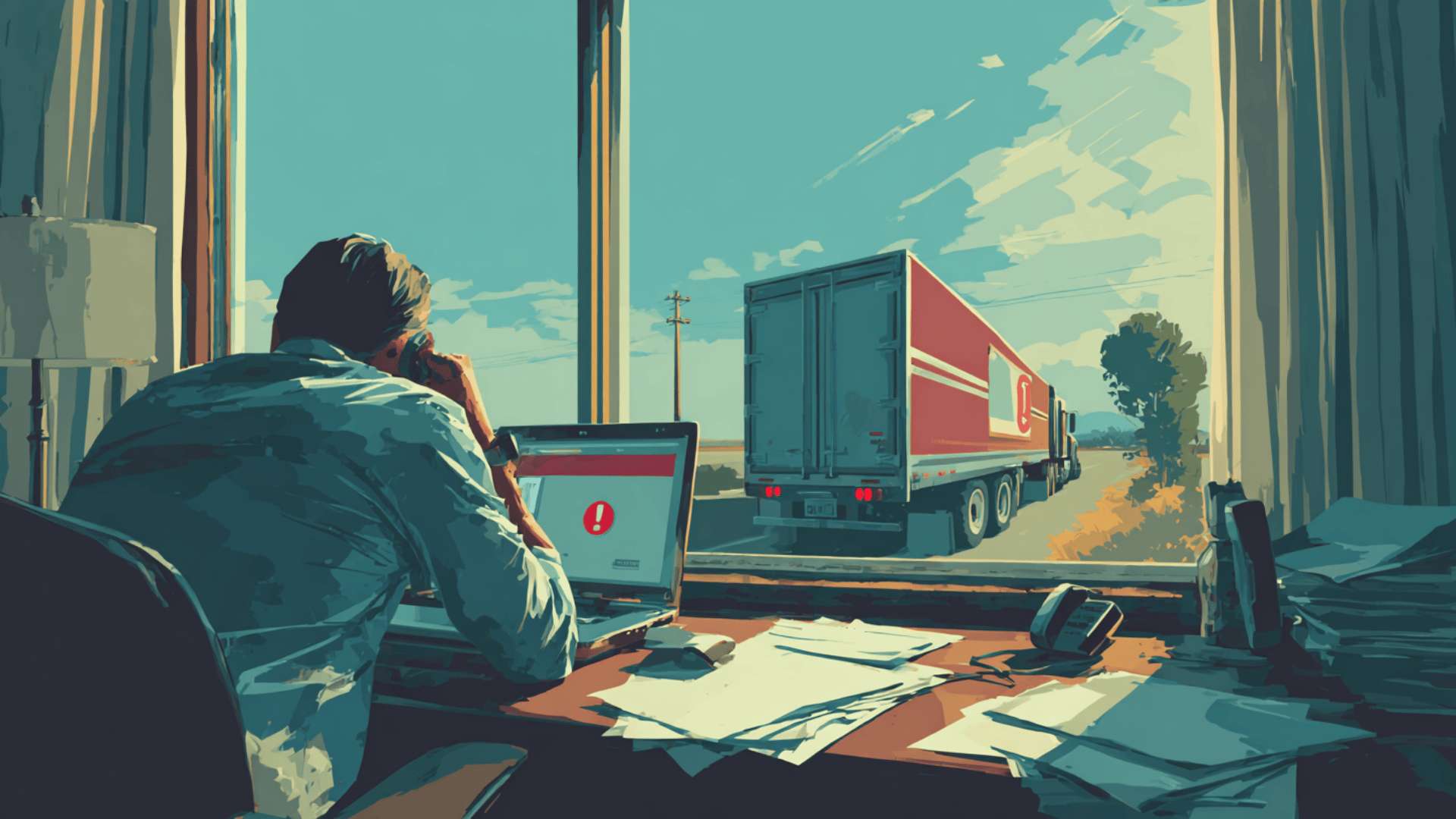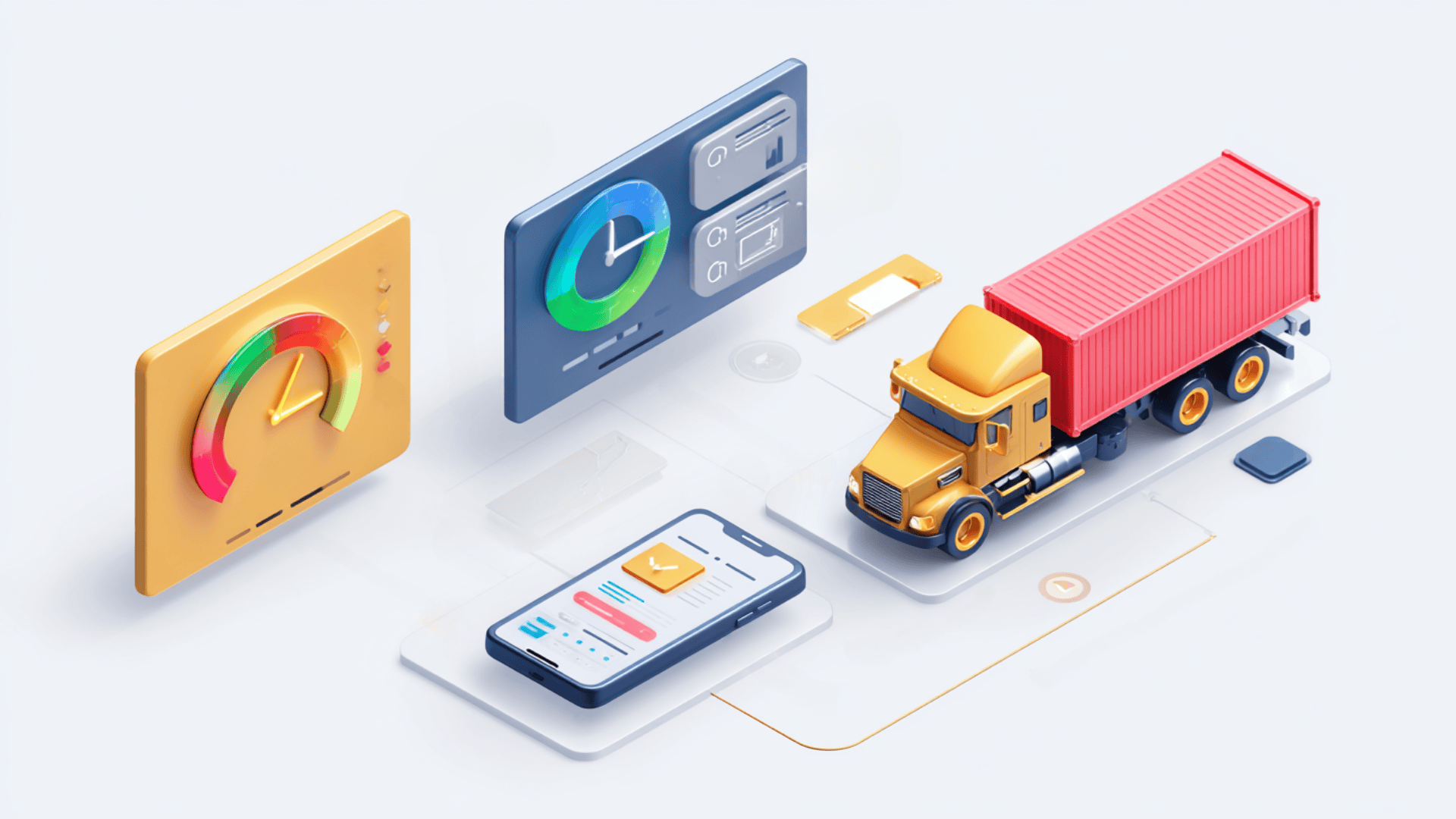If you’ve ever waited on a shipment, you know how important it is to see where it’s at and when it’s moving again. I’ve had my share of refreshing tracking pages, wondering if a delivery is still on schedule.
That’s where cross-country freight tracking comes in. It gives you a clearer picture of the process and helps cut down the guesswork.
But tracking isn’t just about typing in a number. It works differently depending on the carrier, the route, and whether your freight is traveling across the U.S. or beyond.
To make sense of it, let’s start with the company behind the shipment itself.
About CrossCountry Freight Solutions
If you’re tracking a shipment with CrossCountry Freight Solutions, it helps to know a little more about the company behind it. I’ve found that when you understand the carrier’s network and services, the tracking updates make a lot more sense.
CrossCountry Freight Solutions (often called CCFS) is a family-owned LTL carrier that’s been around since 1980.
They focus on less-than-truckload shipping, which means they move freight for multiple customers in the same truck instead of dedicating one truck to one load. This setup keeps costs lower and makes it easier to move shipments across long distances without paying for unused space.
Their coverage is strong across the central and western United States, with service centers in dozens of cities.
On top of standard LTL, they also handle regional shipping, specialty freight, and supply chain support for businesses that need consistent transport.
For you, this means tracking updates reflect how their network works. A shipment might pass through multiple terminals, get consolidated with other freight, and then move toward its destination.
Knowing this helps explain why you sometimes see pauses in updates; it’s just part of the process.
CrossCountry Freight Tracking: How to Track a Shipment

Tracking with CrossCountry Freight Solutions (CCFS Tracking) isn’t complicated, but each step has a few details that make the process smoother. Let me walk you through it in a little more depth.
Step 1: Find Your Tracking Number
The tracking number usually comes from the shipper once your freight is booked.
With CCFS, this is often called a PRO number, which is a unique ID assigned to your shipment. You’ll see it on the bill of lading, invoice, or shipping confirmation email.
If you’re not sure where to find it, ask the business or person who shipped the freight; they’ll have it on their paperwork.
Step 2: Go to the CCFS Tracking Portal
Head over to the official CrossCountry Freight Solutions website. On the homepage, there’s a “Track a Shipment” link that takes you straight to their tracking portal.
You don’t need an account to track a single shipment, but having one helps if you plan on checking multiple shipments or want access to shipping history.
Step 3: Enter Your Details
Type your PRO number into the search bar. The system links this number to the scans your shipment receives as it moves through the CCFS network.
Each time your freight is loaded, unloaded, or processed at a terminal, the barcode is scanned, and that data flows into the system.
Step 4: Read the Results
The tracking page shows where your shipment was last scanned, its current status, and sometimes an estimated delivery date.
If you set up email alerts, CCFS can notify you automatically when your shipment hits key milestones. Businesses that ship regularly can also use this feature to keep customers updated without manually checking.
This flow is the same whether you’re tracking a single shipment or pulling up your shipping history if you have a CCFS account.
Understanding Freight Tracking Updates
When you enter your PRO number into the CrossCountry Freight Solutions portal, you’ll see status updates linked to barcode scans. Here’s what the most common ones actually mean for your shipment:
- Picked Up: CCFS has collected the freight from the shipper. Your shipment is now officially in their system and moving toward the first terminal.
- In Transit: The freight is on the move between terminals or service centers. It may stop along the way to be rerouted, but this is a normal part of the process.
- At Terminal: Your shipment has arrived at a CCFS facility. It’s being unloaded, sorted, or prepared to be loaded onto another truck for the next leg of the journey.
- Out for Delivery: The freight has reached the final service center and is now on a truck heading directly to its delivery address.
- Delivered: The shipment has been dropped off and signed for. You may also see a delivery time or proof of receipt included in the tracking details.
- Exception or Delay: Something has slowed the normal process, such as weather, paperwork, or scheduling. Most delays resolve themselves as the shipment moves on the next available truck.
These updates might look technical at first, but once you know what each one means, it’s easier to follow your shipment’s route from pickup to delivery.
What to Do If Your Tracking Number Doesn’t Work

It can be frustrating when your tracking number doesn’t pull up any results, but it usually comes down to a simple fix. Here are a few things to try before worrying about lost freight:
1. Double-Check the Number
CrossCountry uses a PRO number as the main tracking ID. You’ll find it on the bill of lading, invoice, or confirmation email from the shipper.
If you’re typing it in manually, double-check for extra spaces or missing digits. Those small mistakes are the most common reason results don’t appear. If possible, copy and paste the number directly instead of retyping it.
2. Wait a Little Longer
Even when the number is correct, tracking might not update right away. I’ve seen shipments take until the end of the business day to appear after being picked up.
This is because the first scan at the terminal or dock hasn’t synced yet with the online system. Give it a few hours before trying again. You’ll often see the status appear once the system refreshes.
3. Try an Alternative Tool
If the CCFS portal still isn’t giving you results, third-party platforms can help.
17TRACK and Track123 both integrate with thousands of carriers, including CrossCountry. They sometimes show scans or updates faster because they pull data from multiple sources at once.
These tools are especially useful if you’re tracking several shipments at once or if your freight is moving across different carriers in its route.
4. Contact CrossCountry Freight Solutions
If nothing updates after a full day or two, the next step is to call or email CCFS directly. Have your PRO number, shipper’s name, and destination details ready; they’ll need that to trace the shipment internally.
Customer service can confirm whether the freight has been picked up, where it was last scanned, and when you should expect the next update.
5. When to Escalate
If your tracking number still doesn’t show any updates after 48 hours, it’s worth contacting CrossCountry Freight Solutions directly. By that point, your shipment should have been scanned into the system.
If you wait longer than 3–4 days without any progress, consider asking the shipper to confirm details on their end as well. That way, you’ll know whether the delay is with the carrier, the paperwork, or the pickup itself.
Multi-Carrier and Third-Party Tracking Options
If you only need to track one CrossCountry shipment, the CCFS portal does the job. But if you’re handling multiple shipments or working with more than one carrier, third-party tools can save you a lot of time.
Benefits of External Platforms
Platforms like 17TRACK, Track123, and FreightCenter don’t just serve as backups when a number isn’t showing. They’re designed to manage freight visibility across many carriers at once.
You can drop all your tracking numbers into one dashboard instead of visiting different websites. Many also offer email and SMS alerts, delivery estimates, and even shipment history; all in one place.
API Solutions for Businesses
For companies shipping at scale, these platforms go further with API integrations. That means you can connect their tracking data directly into your order management system or customer portal.
Your buyers see live updates on your site, without you manually checking or sending notifications. This not only cuts down on “Where’s my order?” calls, but also builds trust by making tracking feel effortless and transparent.
Where These Tools Make the Biggest Difference
- E-commerce brands: Keep customers updated automatically and reduce support requests.
- Manufacturers: Track raw materials from different suppliers while monitoring outgoing freight.
- Distributors: Manage shipments across multiple carriers without juggling dozens of portals.
- 3PL providers: Give clients one central hub for freight visibility instead of sending separate links.
By using multi-carrier platforms, both small businesses and large shippers get more control and fewer headaches when managing freight.
Why Freight Tracking Matters for Businesses and Customers

I know how tracking can feel like just another step in the process, but it actually makes a big difference for both businesses and the people waiting on shipments.
For businesses, reliable tracking saves time and money. Clear visibility helps them plan inventory, schedule staff, and avoid costly surprises. It also cuts down on endless calls that eat up customer service time.
With real-time updates, companies can simply point customers to the tracking page instead of scrambling for answers.
On the receiving side, tracking builds trust. Nobody likes waiting around with no idea when their order will show up.
Real-time updates give customers confidence that their shipment is moving, even if it makes a few stops along the way. And when something does cause a delay, seeing a status update is a lot less stressful than silence.
Good tracking is about more than convenience; it strengthens relationships. Businesses look more professional when they provide accurate updates, and customers feel valued when they’re kept in the loop.
In the long run, that trust often leads to repeat business and fewer disputes over late deliveries.
Cross-Country vs. Cross-Border Tracking
Tracking looks a little different depending on whether your shipment is staying within the U.S. or heading overseas. Knowing how each works helps set the right expectations.
Domestic (Cross-Country) Tracking
For shipments that stay within the U.S., you can track them directly through the CrossCountry Freight Solutions portal.
Enter your PRO number, and you’ll see real-time updates as the freight moves between terminals until it reaches the final delivery point. Updates are usually frequent and reliable, since everything stays within CCFS’s own network.
Cross-Border (International) Tracking
When freight goes overseas, visibility becomes more complex. CCFS mainly covers domestic freight, so once your shipment leaves their network, you’ll often need to use a third-party tool like 17TRACK or Track123.
These platforms pull updates from multiple carriers to help fill in the gaps when freight changes hands internationally.
Customs is often the biggest wildcard in cross-border tracking. Packages may sit for inspection, wait on unpaid duties, or get delayed due to paperwork errors.
Updates aren’t always as frequent as domestic shipments, but that doesn’t mean the freight is lost; it’s just working its way through another layer of the process.
Wrapping Up
Cross-country freight tracking isn’t just about knowing where your shipment is; it’s about having peace of mind. I know how stressful it feels to be left in the dark, and having clear updates makes the process smoother for everyone.
Whether you’re using CrossCountry Freight Solutions or a third-party tool, tracking helps you plan better, answer customer questions, and avoid surprises.
The key is understanding how to use the tools available, what the different statuses mean, and when to step in if something doesn’t look right.
If you found this helpful, check out my other blogs on shipping and logistics. You’ll pick up even more tips to make freight tracking simple.















